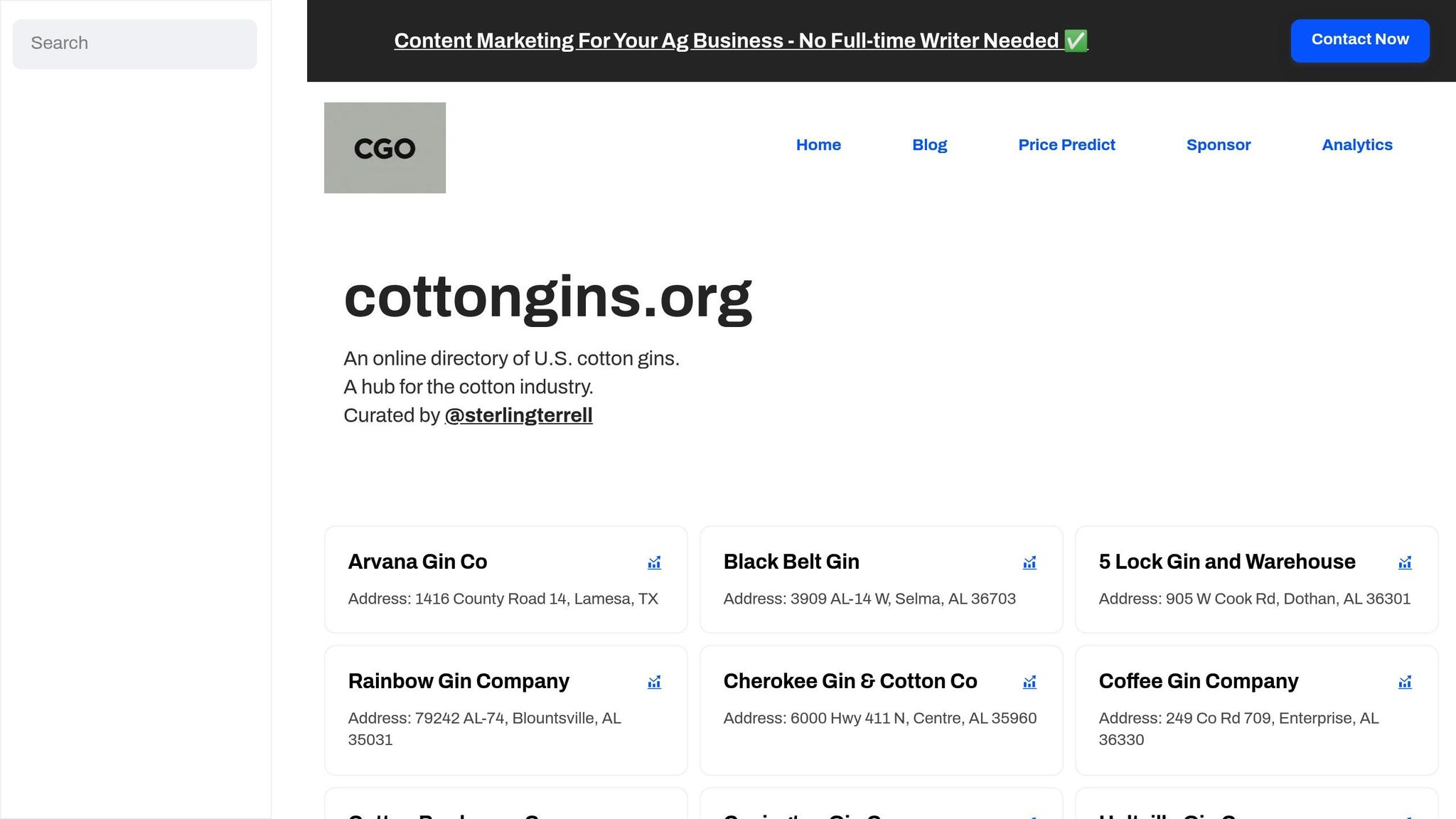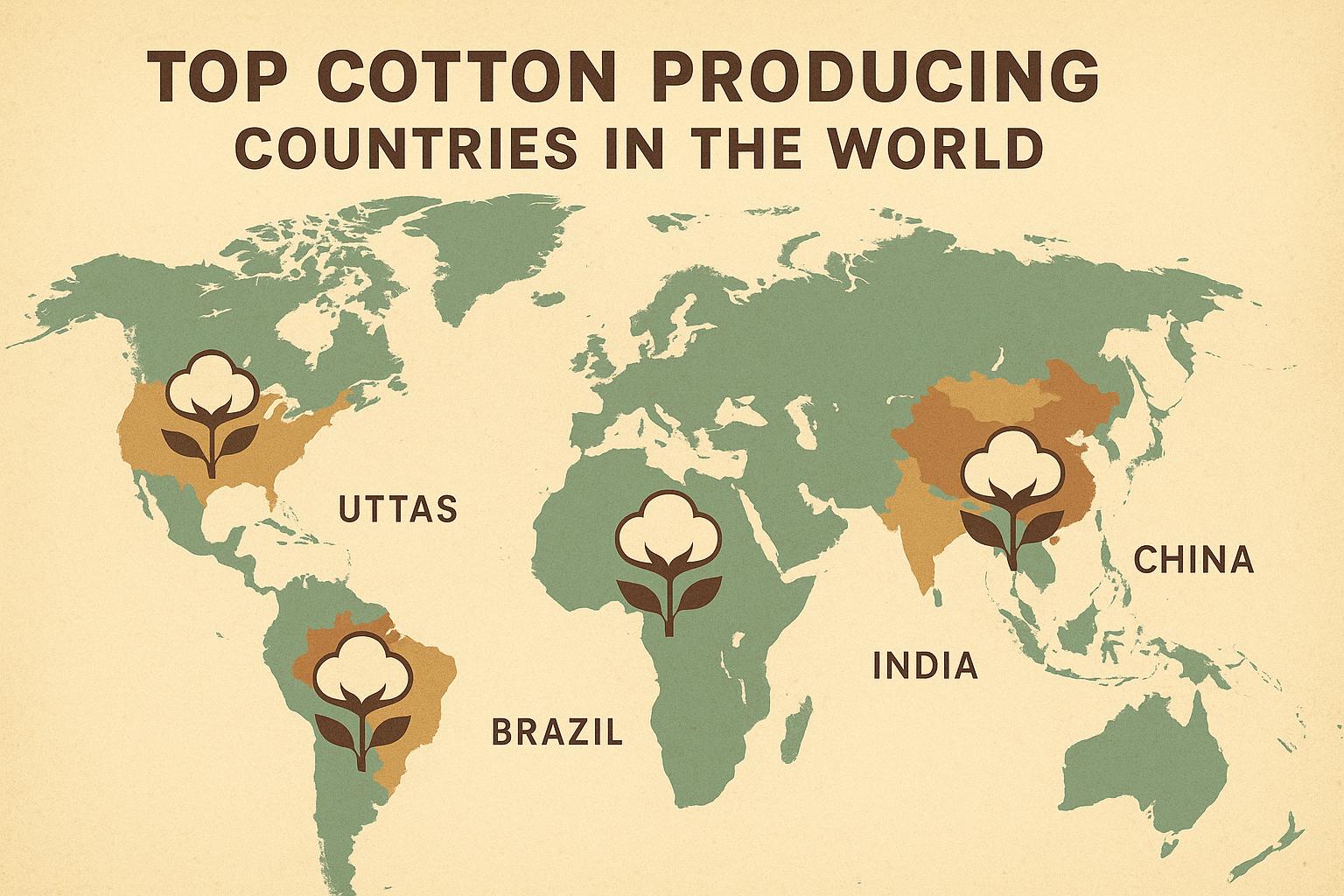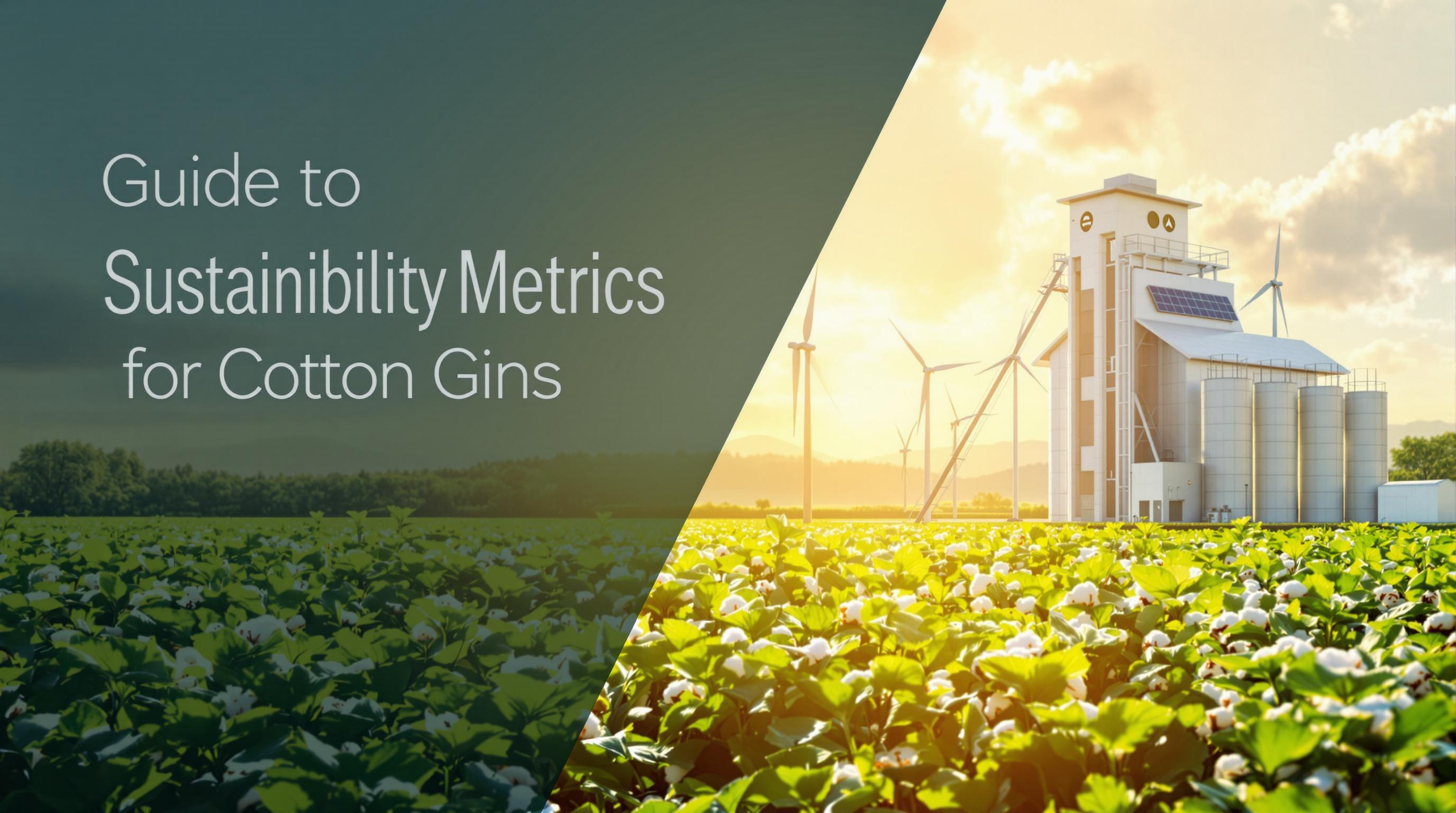Operating a cotton gin requires meeting strict federal permit requirements to avoid fines, legal issues, or operational delays. Compliance primarily involves adhering to air and water quality standards under the Clean Air Act (CAA) and Clean Water Act (CWA). Here's a quick rundown:
- Air Permits: Necessary if emissions exceed thresholds (e.g., 100 tons/year for pollutants). Calculate emissions based on peak capacity.
- Water Discharge Permits: Required for stormwater runoff or if discharging water from operations like equipment cleaning.
- Documentation: Maintain accurate records, submit timely reports, and ensure permit renewals.
- Inspections: Be prepared for unannounced visits by maintaining equipment and keeping all permits accessible.
Federal Permits for Cotton Gins
Key Federal Regulations
Cotton gin operations are subject to oversight by several federal agencies, each with its own set of regulations that directly impact the permits your facility may need. At the forefront is the Environmental Protection Agency (EPA), which enforces environmental compliance rules, particularly those related to air and water quality standards that affect ginning operations.
The Clean Air Act (CAA) lays out the requirements for air quality, setting emission standards and mandating permits for facilities that exceed specific pollutant thresholds. Cotton gins, known for generating dust and particulate matter during processing, often fall under these regulations.
Similarly, the Clean Water Act (CWA) governs water quality and discharge permits. Cotton gin facilities must pay close attention to stormwater runoff, especially when outdoor processing or storage areas could lead to contamination. Under the CWA, permits are required for point source discharges, and facilities must adhere to stormwater management standards.
In short, compliance with environmental permits - primarily managed by the EPA - is a key focus for cotton gin operations. These regulations shape the specific permits your facility will need.
Permit Requirements for Cotton Gins
Air emissions permits are required if your facility exceeds emission thresholds set by federal or state regulations. Factors like total annual emissions of particulate matter, volatile organic compounds, and other pollutants determine whether a permit is necessary. To assess this, operators can use tools like the TCEQ's "Emissions Calculations for Cotton Gins" Excel file. It's essential to calculate your facility's potential to emit based on its maximum operational capacity, not just typical processing volumes.
Stormwater discharge permits under the Clean Water Act apply to facilities with outdoor storage, exposed equipment, or pollutant discharge points. Facilities may need NPDES or general stormwater permits to address runoff and meet water quality standards.
Water discharge permits are required if your facility discharges process water, cooling water, or other wastewater streams. Even if your operations primarily involve dry cotton processing, you might still need permits for activities like dust control or equipment cleaning, which can create discharge streams.
If you're uncertain about your permit requirements, the TCEQ Air Permits Mechanical/Agricultural/Construction Section can provide assistance with air permitting questions. For water-related permits, you can seek guidance from EPA regional offices or state environmental agencies that implement these federal programs locally.
Permit Compliance Checklist
Determining Permit Requirements
To figure out if your cotton gin needs a federal Title V operating permit, start by calculating your facility's maximum potential emissions for air pollutants and hazardous air pollutants (HAP). A cotton gin is considered a "major source" if its emissions exceed 100 tons per year for any pollutant, 10 tons per year for a single HAP, or 25 tons per year for combined HAP emissions. These thresholds might be stricter in non-attainment areas. Make sure your calculations reflect the facility's design operating at full capacity, such as during the peak cotton season. If your emissions exceed these limits, you could qualify as a "Synthetic Minor Source" by adopting enforceable restrictions to keep emissions below the thresholds.
For water-related permits, facilities capable of producing 100,000 gallons per day (about 70 gallons per minute) must register as a Major Water User. Once you've determined your permit needs, gather the necessary documentation to support your application.
Application and Documentation
When submitting your permit application, use the forms and tables provided in agency guidance documents to simplify the review process. Precise and complete documentation is crucial, not just for the initial approval but also for future renewals. Emission calculations should be accurate and consistent with agency expectations - tools like Excel workbooks provided by regulatory agencies can help ensure this. Don’t forget to confirm and pay any applicable permit processing fees. Additionally, take a close look at your entire operation to identify all permits that may apply to your facility.
Renewal and Notification Requirements
For facilities designated as Major Water Users, annual water usage reports must be submitted by March 31 each year. Check your permitting agency's guidance documents for specific deadlines and notification requirements. If you're unsure about any part of the process, reach out to the relevant environmental agency. For example, you can contact TCEQ's Air Permits Mechanical/Agricultural/Construction Section or your state's permit liaison for assistance.
Inspection and Enforcement Preparation
Federal Inspection Process
Federal inspectors focus on ensuring your operations align with permit requirements. They’ll review your documentation, including permits, maintenance logs, and self-monitoring data, to confirm accuracy and accessibility. Beyond paperwork, inspectors may conduct on-site walkthroughs to verify that your operations match the details in your permits. Since inspections can happen without warning, staying prepared at all times is crucial.
Compliance Best Practices
Being ready for unannounced inspections requires proactive steps. Here are some practical tips to help you stay compliant:
- Conduct routine self-audits: Regularly check signage, safety equipment, and documentation to ensure everything is up-to-date. Use a checklist tailored to your specific permit requirements to stay consistent.
- Organize your records: Keep all permits, correspondence, maintenance logs, and monitoring data in clearly labeled folders, making them easy to locate during an inspection.
- Stay informed: Subscribe to updates from your state and the EPA, and set reminders for permit renewals and report deadlines to avoid missed submissions.
- Train your team: Educate staff on compliance procedures and assign a primary contact who understands the permits and can confidently handle inspections.
- Log equipment maintenance: Keep detailed records of maintenance activities, such as filter replacements and repairs, for environmental control equipment.
These practices not only ensure compliance but also make inspections less stressful and more efficient.
sbb-itb-0e617ca
Resources for Cotton Gin Operators
Using cottongins.org for Regulatory Support

The cottongins.org directory is more than just a tool for locating cotton gin facilities - it’s also an essential resource for regulatory needs. When applying for permits, operators need precise facility details, and this directory provides exact locations that are critical for meeting federal permit standards.
The directory includes listings for cotton gins in major states like Alabama, Arkansas, Arizona, California, Florida, Georgia, Louisiana, and Mississippi. For instance, examples such as Arvana Gin Co, located at 1416 County Road 14, Lamesa, TX, and Black Belt Gin, at 3909 AL-14 W, Selma, AL 36703, highlight the detailed information available. This comprehensive database ensures operators can verify facility details accurately, streamlining the permitting process.
To keep the directory up-to-date, operators can use the "Submit A Gin" feature. Additionally, the "Blog Posts In Your Inbox" option provides timely updates on regulatory changes and compliance tips. These tools work hand-in-hand with federal and state resources, making it easier for operators to stay on top of permit compliance requirements.
Additional Regulatory Resources
For cotton gin operators, navigating permit compliance involves leveraging guidance from both federal and state agencies. The U.S. Environmental Protection Agency (EPA) plays a significant role in overseeing various aspects of cotton gin operations. For air quality compliance, the EPA enforces State Implementation Plans (SIPs), which outline state-specific rules designed to maintain national air quality standards under the Clean Air Act. The EPA also manages the Pesticide General Permit (PGP) under the National Pollutant Discharge Elimination System (NPDES) for facilities that discharge pesticides into U.S. waters.
The Occupational Safety and Health Administration (OSHA) is another key resource, offering safety standards specifically tailored to agricultural operations. OSHA’s agricultural standards, found under 29 CFR Part 1928, include critical requirements like equipment guarding (section 1928.57). Their website, osha.gov, provides interpretation letters and regulatory updates to help operators stay informed about current safety guidelines.
On the state level, environmental departments oversee air quality construction permits for cotton ginning facilities, adhering to EPA-approved regulations. Additionally, state commissions regulate operational factors such as insurance, service pricing, and standards for cotton cleaning and packaging.
Industry organizations also offer valuable support. The National Cotton Ginners Association provides industry-specific guidance and updates, while the National Cotton Council of America serves as another key resource for operators. For federal regulations and insights, the USDA website offers detailed overviews and information tailored to cotton gins.
Conclusion
Navigating cotton gin compliance successfully requires a solid understanding of federal regulations and adherence to established best practices. A key part of this is being well-versed in the rules under the Federal Operating Permits Program and ensuring your facility meets emission limits by using the right control technologies.
One of the most pressing areas of compliance is managing particulate matter emissions. When emission levels exceed allowable thresholds, facilities are required to install and maintain approved control devices. These technical standards aren't optional - they form the backbone of any effective compliance plan.
Proactive communication with regulators can also make a significant difference. If you’re unsure about specific guidance or facility requirements, reaching out to environmental regulatory agencies can help avoid costly missteps. This turns compliance into a manageable part of your operations rather than an overwhelming challenge.
Accurate facility data plays a crucial role in meeting compliance requirements. Resources like the cottongins.org directory not only help locate cotton gins but also provide essential data for permit applications. Coupled with support from the EPA, OSHA, state environmental departments, and organizations like the National Cotton Ginners Association, operators have access to a robust network of tools and guidance.
With air quality regulations constantly evolving, ongoing monitoring and maintenance are essential. These efforts not only ensure your facility remains in compliance but also help you avoid unexpected violations and prepare for federal inspections with confidence.
Investing in proper compliance measures isn’t just about avoiding penalties - it’s about keeping your operations running smoothly. By making compliance a core part of your business strategy, cotton gin operators can position themselves for long-term success and uninterrupted productivity.
FAQs
How can I determine if my cotton gin requires a federal Title V operating permit?
To determine whether your cotton gin requires a federal Title V operating permit, the first step is figuring out if your facility falls under the major source category for air pollution as defined by the Clean Air Act. Typically, a facility is considered a major source if it emits - or has the potential to emit - 100 tons or more of any regulated pollutant annually.
Take a close look at your facility's emissions records and operational capacity to see if these thresholds apply. If your cotton gin qualifies as a major source, you’ll need to apply for a Title V permit. This involves submitting comprehensive details about your emissions and operations to ensure compliance with federal guidelines.
What steps should I take to ensure my cotton gin is ready for federal inspections?
To ensure your cotton gin is always ready for federal inspections, it's essential to keep precise and current records. These records should cover emissions data, equipment maintenance logs, staff training certifications, and safety procedures. Additionally, make it a priority to regularly review and renew necessary permits, like Title V, and verify that all equipment meets federal regulations, including OSHA standards.
Performing routine internal audits can help pinpoint and resolve any compliance issues before inspectors arrive. Being proactive with documentation and safety practices is crucial for meeting federal guidelines and steering clear of potential penalties.
What resources can help me comply with air and water quality regulations for my cotton gin?
To ensure your cotton gin meets air and water quality regulations, there are several key resources to help you stay compliant. The Texas Commission on Environmental Quality (TCEQ) provides detailed guidelines on air permit requirements, including rules for managing particulate matter emissions and ensuring operational compliance. On a federal level, the Environmental Protection Agency (EPA) outlines standards for air quality and water conservation. For instance, the Clean Water Act's NPDES permit requirements play a crucial role in managing wastewater effectively.
For more tailored guidance, platforms like cottongins.org offer valuable information specific to the cotton gin industry. From wastewater management strategies to conservation practices and compliance tips, these resources are designed to simplify the regulatory process and help you align with both state and federal standards.


